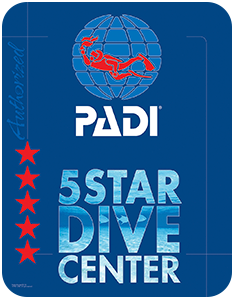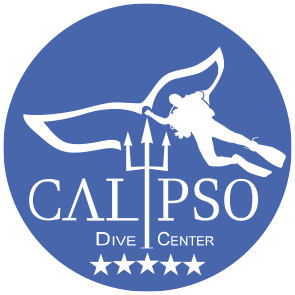Marine Reserve Arinaga "El Cabron"
- Marine Reserve
- Depth: 12 - 23 m.
- Suitable from AOWD
- Current: Yes
- Shore Access
In the eastern part of the island you will find one of the best diving spots in Gran Canaria. This place is located in an area of such richness that it has been nominated as the Marina Natural Reserve of Arinaga. It is a very attractive dive for lovers of the underwater world. About 12 m deep, the rocky platform presents a descent of 23 m that constitutes the veril of El Cabrón, where the highest concentration of several species can be found. In its base there are many caves and crevices that give refuge to the warthogs, some specimens of sprout and catalufas. In front of the veril it dominates a sandy area where the red mullet, the blacksmiths and the popular zone of roncadores of El Cabrón settle, formed by an enormous shoal of fish. Throughout the veril it is common to observe specimens of abbots and groupers. The numerous cracks are also the perfect refuge for moray eels. But one of the greatest spectacles is to find swimming, with its peculiar elegance, groups of bicudas and amberjacks.
Marine Reserve Arinaga "Risco Verde"
- Marine Reserve
- Depth: 8 - 15 m.
- Suitable for all Divers
- Current: Not frequently
- Shore Access
At the northern end of the Arinaga beach, and within the Arinaga Marine Reserve, we find the Risco Verde Bay. It is an ideal place for those divers who want to enjoy a quiet submarine ride full of small fish. The access point is from the beach itself and is simple. The average depth of this dive is 10m, reaching a maximum of 18m. You can see a variety of marine life, banks of snorers, angels, mutts, groupers, cuttlefish, etc … and the current is usually moderate.
Marine Reserve Arinaga "Punta de la Monja"
- Marine Reserve
- Depth: 12 - 23 m.
- Suitable from AOWD
- Current: Not frequently
- Shore Access
This immersion is one of the options offered by the natural reserve of Arinaga, “El Cabrón”, when sea conditions allow it. The access is from coast by a rock entrance, reason why the sea has to be in certain conditions for the entrance. At the beginning of the dive, we find a hole in the reef, in the shape of an elevator shaft, through which we can make a vertical descent to a depth of approximately 14m. Once down we can access the entire bottom of the Cabrón reef, with all its caves and arches, to a maximum depth of 23m.
Marine Reserve Arinaga "Playa del Cabrón"
- Marine Reserve
- Depth: 12 - 14 m.
- Suitable for all Divers
- Current: Yes
- Shore Access
Within the marine reserve of Arinaga, near the Cabron, we find a simple immersion with access from the sandy beach. We found a route on the left side of the beach, formed by a reef of volcanic origin and a multitude of marine life. The bottom is sandy so we can observe, with luck, some black stingray or some angelfish. The maximum depth is about 12 meters and the average is about 7 or 8 meters.
Tufia
- Depth: 15 - 18 m.
- Suitable for all Divers
- Current: Not frequently
- Shore Access
Tufia has been declared a protected area since 1973 by the Government due to the discovery of archaeological remains that testify the aboriginal life of the island in its beginnings, an area of approximately 54 hectares that preserves ancient constructions as well as a set of caves that open in the south side. Once under the water, you will witness and admire various layers of underwater lava, a multitude of caves and caves waiting to be explored. A great variety of species where rays and morays stand out for their great representation in a dive with depths ranging between 12 and 22 meters.
Sardina del Norte Las Palmas
- Marine Reserve
- Depth: 12 - 18 m.
- Suitable for all Divers
- Current: Not frequently
- Shore Access
Artificial Reef Biotopos (Arguineguin)
- Reef - Artificial
- Depth: 20 - 23 m.
- Suitable from AOWD
- No Current
- Boat Access
Located 5 minutes from the Pasito Blanco sports pier, in the south of the island, the Baja we find ourselves as a platform with a rectangular aspect, with something more than 60 meters long and 16 meters wide. Around the language of basaltic origin is the sandy area, where it is common to find the classic angels and various mutts and rays. Arranged in strata, the Baja gradually loses altitude from south to north, starting from a depth of 17 m at its highest point. Taking a quiet walk around the Baja and exploring every corner can be an activity full of surprises. It will not be uncommon to find several moray eels showing their teeth or some spiny balloon fish waiting for the night. The snorers, always cuddled together, will try, unsuccessfully, to go unnoticed. A beautiful and withdrawn spirograph puts the point of tenderness, reminding us of the fragility of the environment. Do not forget to observe the great blue, as it is a zone of passage of pelagic as fast tuna or some fastástico amberjack.
Natural Reef Pasito Blanco
- Reef - Natural
- Depth: 15 - 19 m.
- Suitable from AOWD
- Boat Access
Located just over 5 minutes from the marina of Pasito Blanco, in the south of the island, this reef is presented as an almost rectangular platform and just over 60m long and 16m wide. Around the reef of Basaltic origin, there is a sandy area where it is quite common to find shark angels, black mutts and a variety of rays. The depth is progressive along the reef, starting at about 17m and ending at about 19m from South to North, and the current is usually moderate.
Wreck Meteor 3 El Pajar
- Wreck
- Suitable from AOWD
- Boat Access
In the area known as “El Pajar” and no more than 10 minutes from the marina, is the Meteor II. With an average depth of 17 meters and a maximum depth of 22m, this ship sunk in 2003, 30m beam and 8m length, offers a very rewarding dive. It is practically whole and in the original navigation position, so the dive becomes more interesting. The peculiar design simulating the “Star Wars” and the great variety of life that surrounds it makes this a spectacular dive. Due to its state, it is possible to enter directly through the boarding gate and be able to observe the entire room. seats and the services of this boat.
Wreck Mogan Cermona II
- Wreck
- Depth: 16 - 21 m.
- Suitable from AOWD
- Boat Access
Departing from Puerto de Mogán, popularly known as Little Venice, and heading south-west, five minutes away from navigation, we find Cermona II. It is a Wreck of 32 meters of length and steel hull. Its main activity was fishing and this fishing boat sank in these waters in May 2002, is at an average depth of 18 meters and maximum of 21m the main attraction of this dive, is the possibility of exploring the control bridge and the ship’s cellars. Also, around this wreck there is always a great diversity of animal and plant life. Another attraction of this inmerisión is the possibility of seeing the tourist submarine of Mogan, “Yellow Submarine”, pass near us.
Volcanic Labyrinth La Cathedral Las Palmas
- Mixed Natural
- Depth: 17 - 40 m.
- Suitable from AOWD
- Boat Access
It is located about 20 minutes sailing from the marina of Las Palmas de Gran Canaria, and stands out for its scenic beauty. We started the dive with a large cave that has a siphon in its upper part about 10 meters deep. The outer walls fall to a depth of about 45 or 50m. During the whole dive, large vaults are carried out so that we can always see several exits, forming a network of corridors and caves. There is a diversity of small life like shrimp, nudibranchs, bogas, pejeverdes, etc … As we have been saying in previous deep-sea dives, the current conditions must be consulted before programming the dive.
Roque Ceniciento Las Palmas
- Reef
- Depth: 12 m.
- Suitable from AOWD
- No Current
- Boat Access
Located to the north of the peninsula of La Isleta, it is formed mainly of lavas. Due to the bad common conditions in the area, there are many wrecks in the area, so it is quite interesting to visit. In addition to the remains, we find a cave or “bufadero” formed by three volcanic tubes. The average depth of the dive is 12 meters and the maximum depth due to the verticality of the rock itself.
Cueva de la Burbuja (Volcain) Las Palmas
- Reef
- Depth: 8 - 9 m.
- Suitable from AOWD
- No Current
- Boat Access
Wreck Angela Pando Las Palmas
- Wreck
- Depth: 20 - 25 m.
- Suitable from AOWD
- Boat Access
Wreck Koss Island Las Palmas
- Wreck
- Depth: 12 - 20 m.
- Suitable from AOWD
- Boat Access
Wreck Arona Las Palmas
- Wreck
- Depth: 28 - 36 m.
- Suitable from AOWD
- Boat Access

